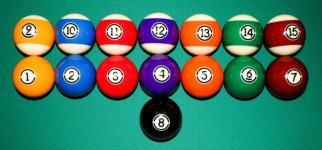All colors = white is called "additive". Don't ask me any more because I can't answer, but you can google it. This is color created by light. Light at an ice capades show, the color on tv or on your monitor. That's all additive color and when combined you get white. The color on the billiard balls, the color you get with paint, the color you mix, the color you know about from elementary school is called "subtractive". Again don't ask me why I can't answerSo when your color theory guy was telling you about "absence of light" he wasn't talking about PAINT color, he was talking about LIGHT color.
In the world of pigmented color, the world of mixed color, black is a "color" unto its own, as is white. That is why your inkjet printer has red (magenta), blue (cyan), yellow (otherwise known as yellow), and black. It also goes by the acronym CMYK, K being "key" or black, and don't ask me why about that either, they should have just called it CYMB :smile:
It is a printing term denoting the Key Printing Plate that impressed the artistic detail. The black and other colors are made with a registration system {usually a series of holes in the plates that correspond to hooks on the plate cylinders} so that the images are laid down on top of one another once they are attached to the printing press.
Last edited:

![CropperCapture[17].jpg CropperCapture[17].jpg](https://forums.azbilliards.com/data/attachments/172/172996-ec5e297b040ee5eb54abec03a42b9188.jpg?hash=7F4pewQO5e)